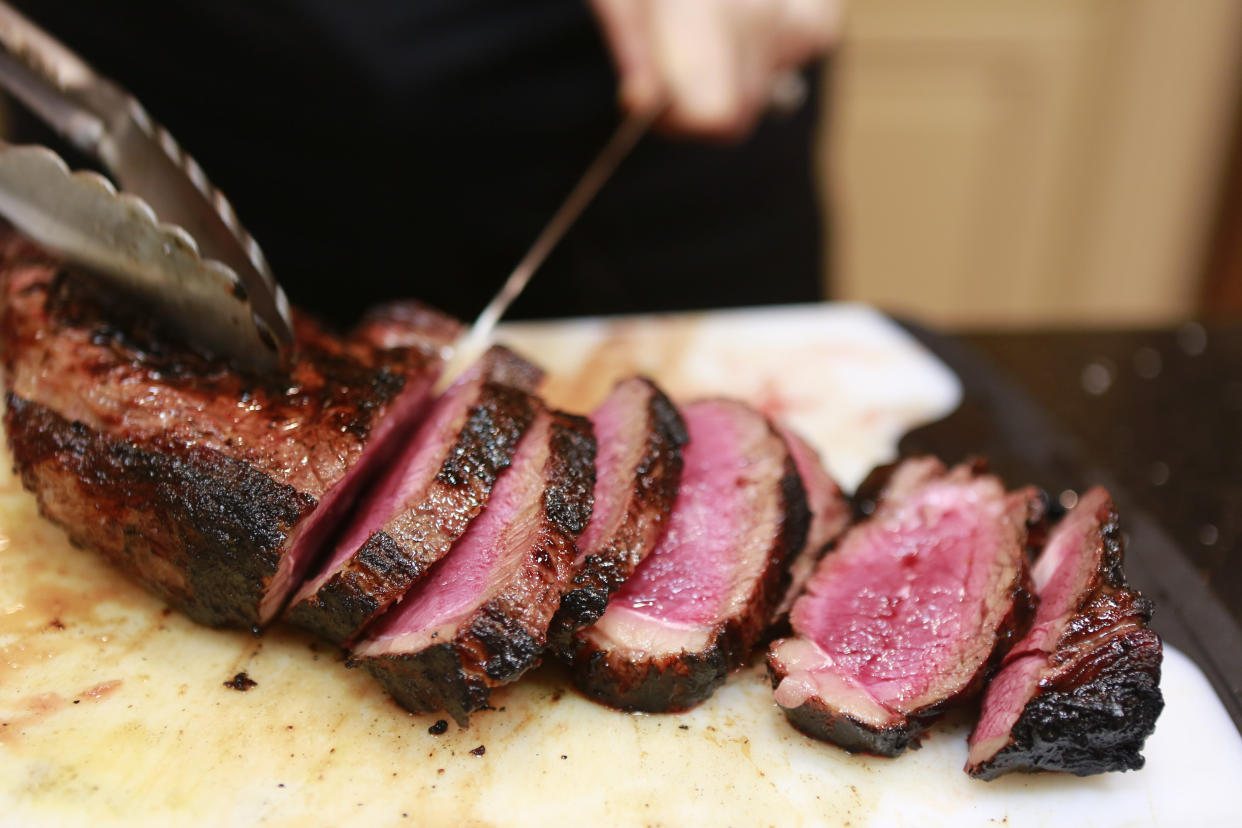How one lecture on the environmental impact of meat has led to people eating less of it

Three years after hearing a 50-minute talk on the environmental impact of meat, students are eating up to 11% less meat, a study has found.
According to United Nations (UN) statistics, 14.5% of greenhouse gas emissions come from animal agriculture.
Researchers in the US – from Occidental College, Claremont Graduate University and the University of California – recruited 213 students to participate in a study that began in autumn 2017.
All of the subjects attended a 50-minute talk outlining the negative environmental impacts of meat consumption, including forest clearing to create more grazing land, the massive amounts of water needed to raise livestock and the huge amounts of methane generated by meat animals.
The talk also pointed out negative health consequences of eating meat, such as an increased risk of heart disease.
Read more: Melting snow in Himalayas drives growth of green sea slime visible from space
A separate 'control' group listened to a talk unrelated to food choices.
The researchers followed up the talk by tracking meal selections made by the volunteer students in the school cafeteria over the ensuing three years.
They found that the test group ate 11% less beef, 9% less poultry and 9% less fish-based meals. They also ate 20% more vegetable-based dishes.
The World Resources Institute recently released its State of Climate Action in 2022 report, noting that if meat consumption worldwide could be slashed by an amount equal to two hamburgers per person, it would go a long way to reducing global warming.
Research last year found that 20 large livestock companies emit more greenhouse gases than Germany, Britain or France.
These large meat-processing firms still secure large investments from investment companies, pension funds and banks, the Meat Atlas Report found. The Meat Atlas was compiled by Friends of the Earth and Heinrich Boll Stiftung, a political foundation in Europe.
Read more: Why economists worry that reversing climate change is hopeless
Between 2015 and 2020, meat and dairy companies received $478 billion from 2,500 investors, The Guardian reported.
The five biggest meat and milk producers emit the same volume of greenhouse gas as oil giant Exxon, the report warned.
Meat production has grown rapidly for decades. In the 1970s, it was just a third of current levels.
The report suggested that meat production would continue increasing, rising by 40 million tonnes by 2029 to a level of 366 million tonnes of meat a year.
The researchers wrote: "The fact that the meat industry keeps profiting through all crises while being subject to little regulation poses the question as to whom governments really listen to.
"While livestock corporations fuel the climate crisis, deforestation, pesticide use and biodiversity loss, and while they drive people off their land, they are still supported and financed by the world's most powerful banks and investors, many of them from Europe.
"Policies on the other hand – be they on animal welfare, trade or climate – include very few restrictions on this damaging industry."
Watch: Easy meat-free meals


